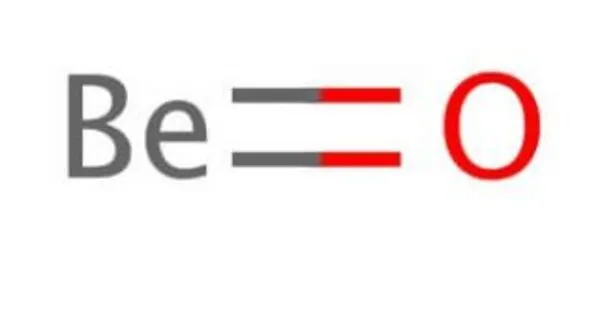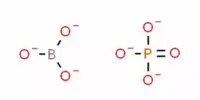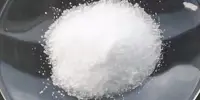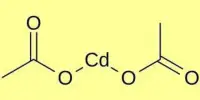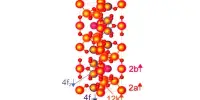Beryllium oxide (BeO), also known as beryllia, is an inorganic compound with the formula BeO. It is extracted from the naturally occurring minerals beryl and bertrandite and produced as a powder by the thermal decomposition of Be(OH)2. This colorless solid is a notable electrical insulator with higher thermal conductivity than any other nonmetal except diamond and greater than most metals. Beryllium oxide is white because it is an amorphous solid.
Beryllium oxide is one of the most expensive raw materials used in ceramics. The cost is linked in part to the precautions taken to avoid the toxic effects of the powder during fabrication. Inhaling fine beryllium oxide particles causes respiratory disease, with the severity increasing with exposure time.
Properties
Because of its high melting point, it is used as a refractory material. It can be found in nature as the mineral bromellite. It acts as a carcinogenic agent. It is a metal oxide and a beryllium molecular entity. Because of its sweet taste, beryllium oxide was historically and in materials science known as glucina or glucinium oxide.
- Chemical formula: BeO
- Molar mass: 25.011 g·mol−1
- Appearance: Colourless, vitreous crystals
- Odor: Odourless
- Density: 3.01 g/cm3
- Melting point: 2,507 °C (4,545 °F; 2,780 K)
- Boiling point: 3,900 °C (7,050 °F; 4,170 K)
- Solubility in water: 0.00002 g/100 mL
- Solubility: soluble in acid
- Thermal conductivity: 330 W/(K·m)
- Refractive index (nD): 1.719
- Crystal structure: Hexagonal
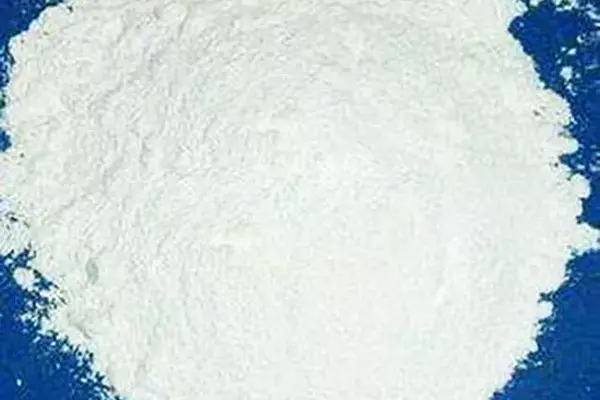
Preparation
Beryllium oxide can be prepared by calcining (roasting) beryllium carbonate, dehydrating beryllium hydroxide, or igniting metallic beryllium:
BeCO3 → BeO + CO2
Be(OH)2 → BeO + H2O
2 Be + O2 → 2 BeO
When beryllium is ignited in air, it produces a mixture of BeO and the nitride Be3N2. Beryllium oxide, unlike the oxides formed by the other Group 2 elements (alkaline earth metals), is amphoteric rather than basic.
Beryllium oxide formed at high temperatures (>800 °C) is inert, but easily dissolves in hot aqueous ammonium bifluoride (NH4HF2) or a hot concentrated sulfuric acid (H2SO4) and ammonium sulfate ((NH4)2SO4) solution.
Structure
BeO crystallizes in the hexagonal wurtzite structure, featuring tetrahedral Be2+ and O2− centres, like lonsdaleite and w-BN (with both of which it is isoelectronic). In contrast, the oxides of the larger group-2 metals, i.e., MgO, CaO, SrO, BaO, crystallize in the cubic rock salt motif with octahedral geometry about the dications and dianions. At high temperature the structure transforms to a tetragonal form.
Applications
Sintered beryllium oxide is a very stable ceramic. Beryllium oxide is used in rocket engines and as a transparent protective over-coating on aluminized telescope mirrors.
Beryllium oxide is used in many high-performance semiconductor parts for applications such as radio equipment because it has good thermal conductivity while also being a good electrical insulator.
It is used as a filler in some thermal interface materials, such as thermal grease. Some power semiconductor devices have used beryllium oxide ceramic between the silicon chip and the metal mounting base of the package to achieve a lower thermal resistance value than an aluminum oxide construction.
It is also used as a structural ceramic in high-performance microwave devices, vacuum tubes, magnetrons, and gas lasers.
Safety
BeO is carcinogenic in powdered form and may cause a chronic allergic-type lung disease berylliosis. Once fired into solid form, it is safe to handle if not subjected to machining that generates dust. Clean breakage releases little dust, but crushing or grinding actions can pose a risk.
